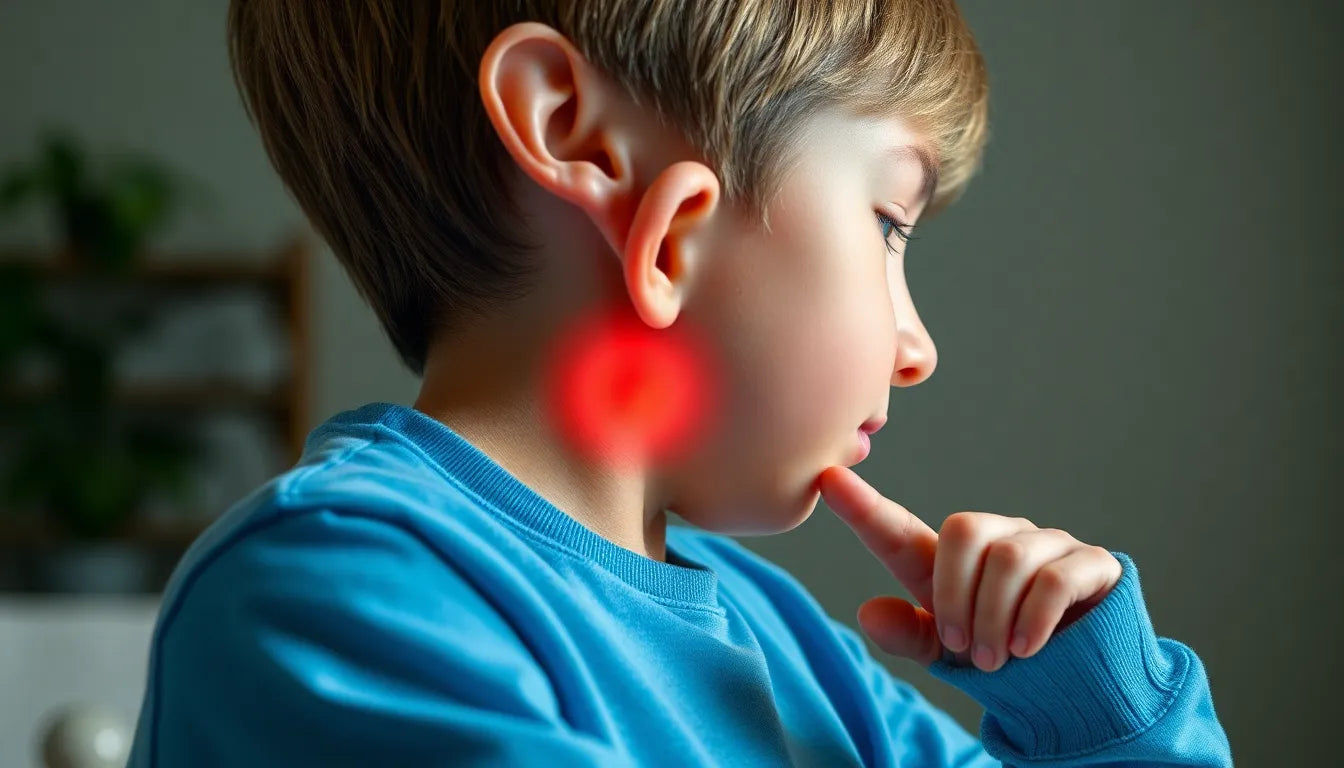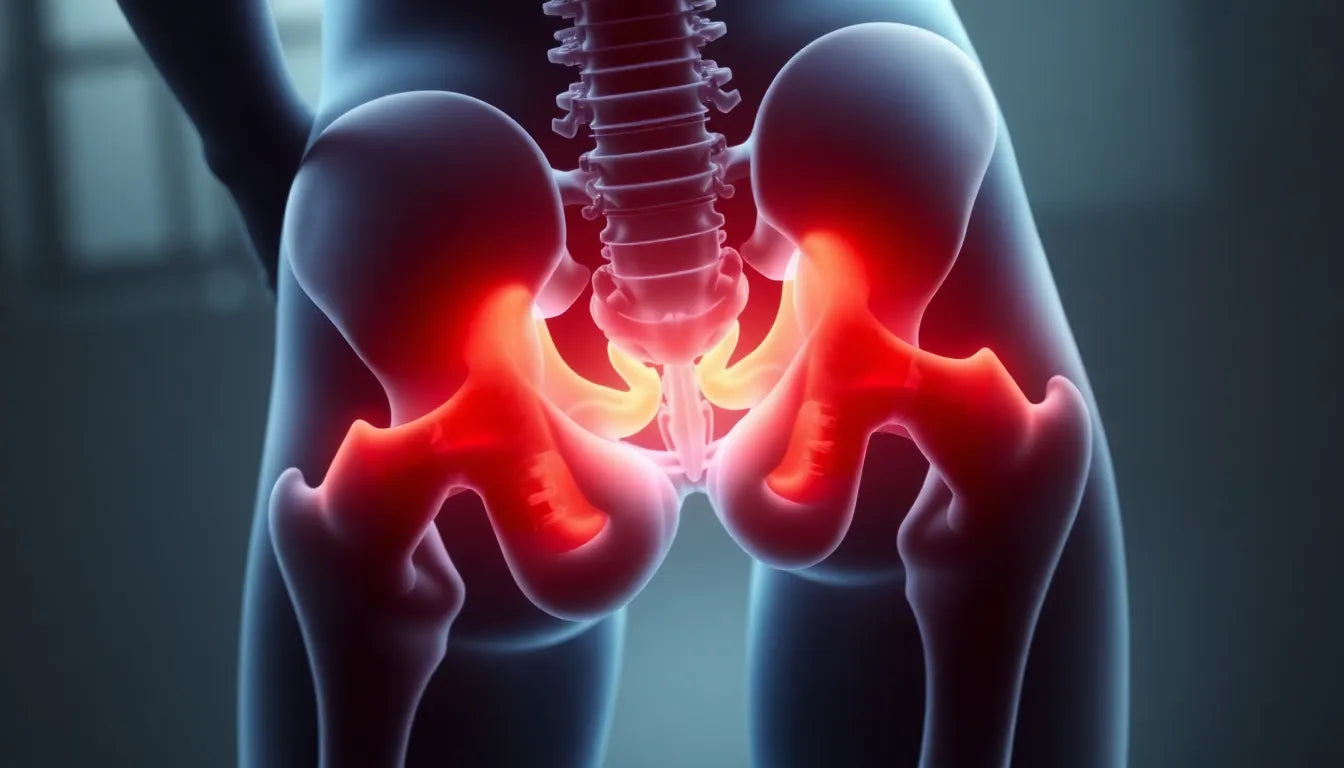Have you ever woken up with a stiff, painful hip that makes even the simplest movements feel like a chore? If so, you're not alone. Many people experience discomfort in their hips, and one common yet often misunderstood culprit is hip enthesopathy. This condition can significantly impact your daily life, making it essential to understand what it is and how to manage it effectively.
what is hip enthesopathy?
Hip enthesopathy refers to the inflammation or degeneration occurring at the enthesis, which is the site where tendons or ligaments attach to the hip bone. This condition can lead to pain, stiffness, and a reduction in hip mobility, making everyday activities challenging. The enthesis is a critical component of joint function, and when it becomes compromised, it can disrupt your ability to move comfortably.
impact on daily life
The effects of hip enthesopathy extend beyond mere discomfort. The pain and stiffness associated with this condition can hinder your ability to perform routine tasks, such as walking, sitting, or even getting out of bed. Over time, reduced mobility can lead to a sedentary lifestyle, which may further exacerbate the problem. Understanding the nature of hip enthesopathy is crucial for devising effective management strategies and preventing further complications.
importance of understanding hip enthesopathy
Gaining a clear understanding of hip enthesopathy is vital for several reasons. Firstly, it allows for the identification of early symptoms, enabling prompt intervention and potentially preventing the condition from worsening. Secondly, knowledge of the causes and risk factors can help in adopting preventive measures, reducing the likelihood of recurrence or progression. Finally, understanding hip enthesopathy empowers individuals to make informed decisions about their treatment options, leading to more effective management and improved quality of life.
By familiarizing yourself with the nuances of hip enthesopathy, you can take proactive steps towards managing your hip pain and regaining control over your mobility. In the following sections, we will delve deeper into the causes, symptoms, and diagnostic approaches, as well as explore various treatment strategies to help you navigate this condition with confidence.
understanding hip enthesopathy
To effectively manage hip enthesopathy, it's essential to delve into the underlying causes and symptoms that characterize this condition. This understanding not only aids in accurate diagnosis but also informs the development of a tailored treatment plan that addresses the specific needs of each individual.
causes of hip enthesopathy
Hip enthesopathy can be caused by a variety of factors, which are generally categorized into inflammatory and non-inflammatory origins. Inflammatory causes are often linked to autoimmune disorders, such as psoriatic arthritis or ankylosing spondylitis, where the body's immune system mistakenly attacks healthy tissue at the enthesis. On the other hand, non-inflammatory causes typically result from mechanical stress, overuse, or trauma. Repetitive activities that place excessive strain on the hip joint can lead to degeneration or wear and tear at the enthesis.
Common risk factors for developing hip enthesopathy include engaging in high-impact sports, having biomechanical issues such as leg length discrepancies, and possessing a genetic predisposition to autoimmune conditions. Understanding these causes is pivotal in both preventing the onset of hip enthesopathy and managing existing symptoms effectively.
recognizing symptoms
Identifying the symptoms of hip enthesopathy early can significantly improve the prognosis and management of the condition. The hallmark symptoms include pain and stiffness, particularly noticeable in the morning or after prolonged periods of inactivity. This stiffness can make it challenging to perform everyday activities, such as walking or climbing stairs.
In some cases, individuals may also experience swelling, warmth, or redness around the hip joint, indicative of inflammation. These symptoms can lead to a reduced range of motion, making weight-bearing activities difficult and potentially affecting overall mobility. Recognizing these signs early enables timely intervention and can prevent further deterioration of the joint.
diagnosis and clinical insights
Accurate diagnosis of hip enthesopathy requires a comprehensive approach that combines clinical examination with advanced diagnostic tools. During a physical examination, healthcare providers assess the patient's range of motion, tenderness, and pain levels. A detailed patient history is also crucial to understand the onset and progression of symptoms and any potential risk factors.
diagnostic approaches
Imaging techniques play a vital role in confirming a diagnosis of hip enthesopathy. Ultrasound and MRI are commonly used to provide detailed images of the hip joint, revealing inflammation or degeneration at the enthesis. These imaging modalities are particularly useful in distinguishing hip enthesopathy from other conditions with similar symptoms.
Additionally, laboratory tests may be conducted to rule out autoimmune conditions that could contribute to enthesopathy. These tests can detect markers of inflammation or antibodies associated with autoimmune diseases, providing valuable insights into the underlying causes of the condition.
clinical perspectives
Clinical insights emphasize the importance of early diagnosis and the development of a personalized treatment plan. According to Dr. Emily Carter, a rheumatologist, "Early intervention in hip enthesopathy can prevent chronic pain and improve long-term outcomes. It's crucial to tailor treatment to the individual's specific needs and lifestyle."
Pediatric considerations are also important, as hip enthesopathy can manifest differently in children and adolescents. In these cases, growth patterns and activity levels must be considered when developing a management plan, ensuring that young patients receive appropriate care without compromising their development.
By understanding the causes, symptoms, and diagnostic approaches for hip enthesopathy, individuals can take proactive steps towards managing their condition. In the next section, we will explore various treatment strategies, including both conservative and advanced interventions, to help alleviate pain and improve mobility.

Women's Posture Shirt™ - Black
Supports posture, relieves pain, and improves muscle awareness. Patented Neuroband™ technology.
treatment strategies for managing hip enthesopathy
Managing hip enthesopathy effectively involves a combination of conservative treatments, advanced interventions, and lifestyle adjustments. The goal is to alleviate pain, reduce inflammation, and restore mobility, allowing individuals to resume their daily activities with minimal discomfort.
conservative treatments
The first line of treatment typically involves conservative measures. Rest and activity modification are crucial to reduce strain on the hip, allowing the enthesis to heal. Nonsteroidal anti-inflammatory drugs (NSAIDs) are commonly prescribed to manage pain and inflammation. Additionally, physical therapy plays a vital role in improving flexibility and strengthening the muscles around the hip joint. Tailored exercises help enhance mobility and prevent further degeneration.
advanced interventions
For individuals who do not respond adequately to conservative treatments, advanced interventions may be considered. Orthotics and ergonomic aids, such as custom shoe inserts or supportive braces, can help alleviate stress on the hip. In cases of severe inflammation, corticosteroid injections may be administered to provide rapid relief. Surgery is generally reserved for chronic, unresponsive cases where other treatments have failed to improve symptoms.
lifestyle and ergonomic adjustments
Making lifestyle and ergonomic adjustments is essential for managing hip enthesopathy effectively. Engaging in low-impact activities, such as swimming or cycling, can help maintain fitness without exacerbating symptoms. Ergonomic workplace solutions, such as adjustable chairs and desks, can minimize strain on the hip during prolonged periods of sitting. Proper posture and supportive seating are also important in managing symptoms and preventing further complications.

Lumbar support belt
Supports and stabilizes the lower back, helping relieve pain and tension during daily activities.
frequently asked questions
what is the prognosis for hip enthesopathy?
The prognosis for hip enthesopathy is generally positive, especially when managed with conservative treatments and lifestyle changes. Most individuals experience significant improvement in symptoms and quality of life with appropriate care.
can hip enthesopathy lead to other complications?
If left untreated, hip enthesopathy can lead to complications such as bone spurs or chronic pain. Early intervention and management are crucial to prevent these potential issues.
how does hip enthesopathy relate to arthritis?
Hip enthesopathy can be associated with conditions like psoriatic arthritis, where inflammation at the enthesis is a common feature. Understanding the connection between these conditions is important for comprehensive management.
is hip enthesopathy curable?
While hip enthesopathy may not be completely curable, symptoms can be effectively managed with appropriate treatment and lifestyle modifications, leading to long-term relief and improved mobility.
what are the best exercises for hip enthesopathy?
Exercises such as gentle stretching, strengthening of the hip muscles, and low-impact activities like swimming are beneficial. A physical therapist can provide a tailored exercise program to address individual needs.
Källor
- The Foscote Hospital. (n.d.). "Enthesopathy."
- MedicineNet. (n.d.). "Enthesitis and Enthesopathy."
- WebMD. (n.d.). "Enthesitis and Enthesopathy."
- Medical City Kids Ortho. (n.d.). "Enthesopathy of Hip & Knee."
- Healthline. (n.d.). "Enthesopathy."
- OrthoMed Center. (n.d.). "Enthesopathy."
- Medical News Today. (n.d.). "What to know about enthesopathy."
- Cleveland Clinic. (n.d.). "Enthesopathy and Enthesitis."
- Arthritis Foundation. (n.d.). "Enthesitis and Psoriatic Arthritis."
- NCBI. (n.d.). "Enthesopathy."
- Slocum Center. (n.d.). "Enthesopathy."


















